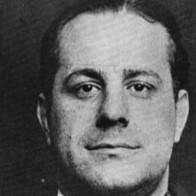
1910 - 1942
Frank Abbandando
Summary
Name:
Frank AbbandandoNickname:
The DasherYears Active:
1920 - 1940Birth:
July 11, 1910Status:
ExecutedClass:
MurdererVictims:
30+Method:
Stabbing / Bludgeoning / StrangulationDeath:
February 19, 1942Nationality:
USA
1910 - 1942
Frank Abbandando
Summary: Murderer
Name:
Frank AbbandandoNickname:
The DasherStatus:
ExecutedVictims:
30+Method:
Stabbing / Bludgeoning / StrangulationNationality:
USABirth:
July 11, 1910Death:
February 19, 1942Years Active:
1920 - 1940Date Convicted:
April 3, 1941bio
Frank Abbandando was born on July 11, 1910, in New York City to Italian immigrant parents, Lorenzo Abbondandolo and Rosaria Famighetti, who came from Avellino, Italy. He was one of twelve children, though only six survived childhood. Growing up in the tough Brooklyn neighborhoods of Brownsville and Ocean Hill, Abbandando was immersed in poverty and street culture, which pushed him into petty crime at a young age.
As a teenager, he was already extorting local shopkeepers, threatening to burn down their stores if they refused to pay protection money. By the late 1920s, he had joined a local gang under Harry “Happy” Maione and quickly rose to a leadership position, managing rackets in gambling, loan sharking, and extortion.
In 1928, at just 18 years old, Abbandando was convicted of assaulting a New York police officer. He was sent to the reform school at Elmira, New York, where he stood out for his athletic talent, especially baseball. It was here he earned his nickname, “The Dasher.”
murder story
By the early 1930s, Abbandando became a central figure in Murder, Inc., the notorious enforcement arm of the National Crime Syndicate. Led by Louis “Lepke” Buchalter and Abe Reles, this group provided contract killing services to organized crime families across the United States. Unlike the traditional Five Families, Murder, Inc. was multi-ethnic, employing Jewish, Italian, and Irish killers who could be trusted to silence rivals and witnesses.
Abbandando’s signature method was using an ice pick to pierce victims through the heart, a brutal yet discreet form of killing. He was credited with more than 30 murders, often for fees as low as $500 per job, though the true number may have been higher. He participated in the elimination of the Shapiro Brothers in 1931 during Brooklyn’s garment racketeering wars and was implicated in many other contract killings.
In September 1937, Abbandando played a key role in the murder of George Rudnick, a Brooklyn loan shark suspected of being an informant. Rudnick was lured into a garage, where he was strangled, stabbed 63 times with an ice pick and meat cleaver, and had his skull crushed. Despite the ferocity of the attack, no arrests were initially made. Two years later, in February 1939, Abbandando and associates murdered Felice Esposito, a mobster targeted for testifying in a mob-related trial decades earlier.
Murder, Inc. continued to operate with impunity until 1940, when Abe Reles turned government informant. His testimony led to dozens of indictments and exposed the full scope of the murder-for-hire ring. Among those arrested was Abbandando, charged with the murder of George Rudnick.
In May 1940, Abbandando, Harry “Happy” Maione, and Harry “Pittsburgh Phil” Strauss stood trial. Although they were convicted, their verdicts were overturned on appeal. In April 1941, Abbandando and Maione were retried, this time without Strauss, who had already been convicted of another murder. They were found guilty of first-degree murder and sentenced to death.
During the trials, Abbandando’s arrogance was on full display. He was so confident in his mob connections that he whispered threats to the presiding judge, certain the verdict would be fixed. When the convictions held, he was stunned, but in public he maintained a demeanor of bravado and mockery.
After nearly a year on death row at Sing Sing Prison, Abbandando went to the electric chair on February 19, 1942. Witnesses reported that he cursed and mocked guards up until the end, showing no signs of fear and treating his final moments with grim humor. His execution was carried out using “Old Sparky,” the prison’s electric chair, and he was pronounced dead shortly after.
A funeral mass was held at Our Lady of Loretto Church in Brooklyn, though the event was marred by his brother assaulting a news photographer. Abbandando was buried in St. John’s Cemetery in Queens.